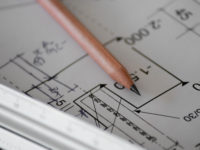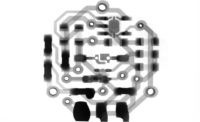Living in the Southeastern U.S. and working for an HVAC and controls service provider, I’ve seen some cases of humidity issues that need investigating. Trend analysis can be an excellent tool. Here are a few examples that really illustrate the value trend analysis can provide.
Relative Changes in Relative Humidity
Several years ago, I was assisting on a warranty call for a computer room air conditioner (CRAC) unit in a server room for a flight simulator suite. The owner required 72°F +/-2° and 50% RH +/-2%, and we were at 70° and 53% RH. I had the equipment manufacturer on the phone, and the technical support person told me to bump the temperature set point up by 1° (I begrudgingly complied). Sure enough, within a few minutes, my relative humidity was in tolerance and my zone temperature still was too. That day, I learned a practical lesson about why it’s called “relative” humidity. When observing the trends of temperature and relative humidity under most conditions, they should sort of mirror each other – as the temperature trend has a local maximum, the relative humidity should have a local minimum. For every step change in temperature, you should see an opposing proportional step change in relative humidity.
More recently, I was looking through zone temperature and humidity trends for a customer who had some rampant humidity issues, and I noticed that every time the HVAC would turn off, the zone temperature and relative humidity would both increase sharply. The fact that the change was sharp combined with the fact that the changes did not move opposite indicated an exogenous effect — namely that moist air was infiltrating the space as soon as the forced-air system stopped running.
Unsynchronized Equipment
Trend analysis revealed the same infiltration problem in a different pattern but in a confirming way. As many of you may know, most commercial buildings should be pressurized from neutral to slightly positive with respect to the outdoors. In the simplest case of packaged rooftop units with associated powered exhaust, this generally means that if air is being exhausted from the building, some forced ventilation means should also be running, preferably with the ability to condition the incoming air (i.e., the packaged rooftop unit). We confirmed that the exhaust fans for the building were running at all times, even though the associated rooftop units were turning off at night.
One can find similar issues to this one when maintenance teams choose to block off outdoor air intakes in the wintertime to protect cooling coils, but this often effectively means the exhaust systems are causing unconditioned air to enter the building under doors and other openings, rather than through the air conditioning system.
Discharge Air Temperature Control
There are a handful of strategies HVAC systems employ to accomplish dehumidification. Sometimes, desiccant wheels are used in equipment, and, other times, a strategy is used with cooling and subsequent reheat, and, in yet others still, a strategy is employed where cold air is brought into the space at a reduced airflow rate. For the latter two, the balance being struck is cooling the air to the point of saturation but not so much as to overcool the space.
In separate cases, I’ve observed humidity issues in a building that really wasn’t designed to control it (surprise, surprise). This system uses hydronic cooling and heating to maintain zone temperature, but it doesn’t monitor relative humidity. In answering a trouble call about humidity, one of our field staff called for support to review trend data and commented that it didn’t seem like the air-handling unit was making cold enough air to really help with dehumidification. We looked over the trends and found the unit rarely made colder than 60° discharge air temperature, and this had to do with the fact that the cooling control loop was tuned to manage zone temperature rather than discharge temperature.
Trends Won’t Tell You Everything
When troubleshooting issues with an HVAC control system, sometimes you find a single culprit, and other times you find compounding issues. When you use trend analysis, you’re more likely to find multiple contributing factors, since you’re able to look at how things behave when you can’t be there to experience it. On the other hand, sometimes you really do just have to be there. After making the determinations I mentioned above about the moist air infiltration and the mismatched equipment schedules, our service team visited the building to meet with the customer about what steps we were taking to resolve their issues. Walking into the lobby, one had to admire the beautiful wall decor made of potted plants that were probably watered daily and likely contributing to the moisture issues.





